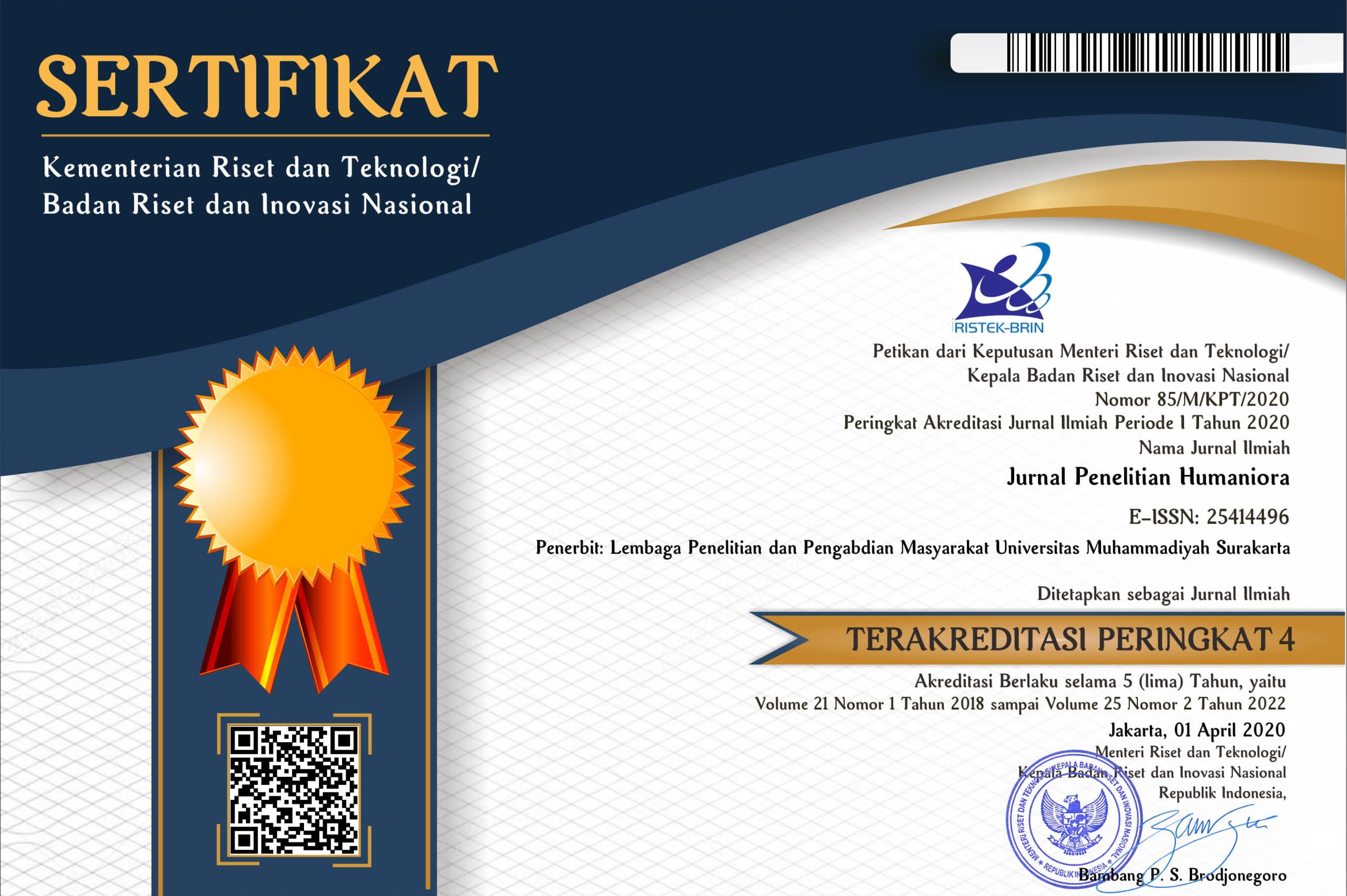PROMOTING TOTAL PHYSICAL RESPONSE (TPR) METHOD ON EARLY CHILDHOOD ENGLISH LANGUAGE TEACHING
Cicih Nuraeni(1*)(1) Universitas Bina Sarana Informatika
(*) Corresponding Author
Abstract
Keywords
Full Text:
PDFReferences
Alawiah, S. (2018). The Effects of Student ’ s Perception on Role Play Technique and Student ’ s Learning Motivation on Speaking Skills, X(1).
Amir Toghyani Khorasgani, M. K. (2017). Teaching New Vocabulary to Iranian Young FL Learners: Using Two Methods Total Physical Response and Keyword Method. International Journal of Languages ’ Education and Teaching, 5(1), 90–100.
Er, S. (2013). Using Total Physical Response Method in Early Childhood Foreign Language Teaching Environments. Procedia - Social and Behavioral Sciences, 93, 1766–1768. https://doi.org/10.1016/j.sbspro.2013.10.113
Munoz, E. M. (2011). Teaching English Vocabulary To Third Graders Through the Application of The Total Physical Response Method. In Teaching. Pereira: Facultad De Bellas Artes Y Humanidades Universidad Tecnologica De Pereira.
Nurani, S., & Yohana, L. (2015). The Effectiveness Of Teaching English Vocabulary Through Total Physical Response Storytelling. Deiksis, 7(1), 63–68.
Rani, M. (2012). Teaching English Vocabulary Using Total Physical Response Method At the Third Grade Students of Sdn Jamika Bandung.
Rokhayati, A. (2017). Promoting Total Physical Response (TPR) For Young Learners in English Class. The 2nd TEYLIN International Conference Proceedings, (April), 75–80.
Savi, V. M. (2014). TOTAL PHYSICAL RESPONSE ( TPR ) ACTIVITIES IN TEACHING ENGLISH TO YOUNG LEARNERS. Физичка Култура и Модерно Друштво, Пос. Изд, Књ., 17, 447–454.
Szmrecsanyi, B. (2006). Morphosyntactic Persistence in Spoken English. (W. Bisang, H. H. Hock, & W. Winter, Eds.). New York: Mouton de Gruyter. https://doi.org/10.1515/9783110197808
Ummah, S. S. (2017). The Implementation of TPR ( Total Physical Response ) Method in Teaching English for Early Childhood, 58, 421–428.
Article Metrics
Abstract view(s): 3639 time(s)PDF: 3227 time(s)
Refbacks
- There are currently no refbacks.











